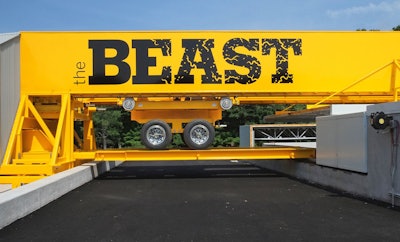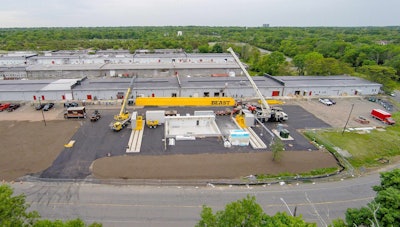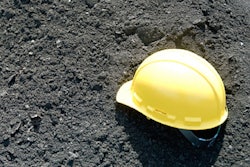 BEAST assembled, before sample placement (June 11, 2015)
BEAST assembled, before sample placement (June 11, 2015)Rutgers University has created an outdoor lab that can simulate extreme stress conditions for bridges in an accelerated environment that will allow researchers to examine 10 to 15 years of effects in less than a year and in real time.
 Rutger’s Bridge Evaluation and Structural Testing (BEAST) laboratory can simulate long-term stress conditions on bridge forms in months rather than years. (Photo: Drew Noel, Rutgers)
Rutger’s Bridge Evaluation and Structural Testing (BEAST) laboratory can simulate long-term stress conditions on bridge forms in months rather than years. (Photo: Drew Noel, Rutgers)The Bridge Evaluation and Structural Testing (BEAST) laboratory, which is part of the university’s Center for Advanced Infrastructure and Transportation (CAIT), simulates extremes in temperatures, rain, snow and ice control treatments and heavy truck traffic.
Full-scale bridge “specimens” are subjected to “rapid-cycling” environmental changes, including traffic simulations to “speed up” the impact and deterioration of the bridge up to 30 times.
CAIT developed the BEAST from its work on the Federal Highway Administration’s program on long-term bridge performance. It was built via a collaboration with the U.S. Department of Transportation’s University Transportation Centers program and the New Jersey Department of Transportation.
“For the first time, engineers will be able to fast forward, observe and quantify the effects of environmental and traffic loading on bridge superstructure systems, including concrete, girders, rebar, joints and other elements—and condense decades of aging into just a few months,” CAIT Research Manager Andrés Roda said.
“Ultimately, what the BEAST can teach us will significantly improve public safety, facilitate U.S. commerce and economic growth, and potentially save billions in infrastructure expenditures,” CAIT Director Ali Maher said, adding the lab can provide data now, rather than after years of monitoring in the field.
In doing so, transportation agencies will have data to help them make long-term decisions on transportation projects.










